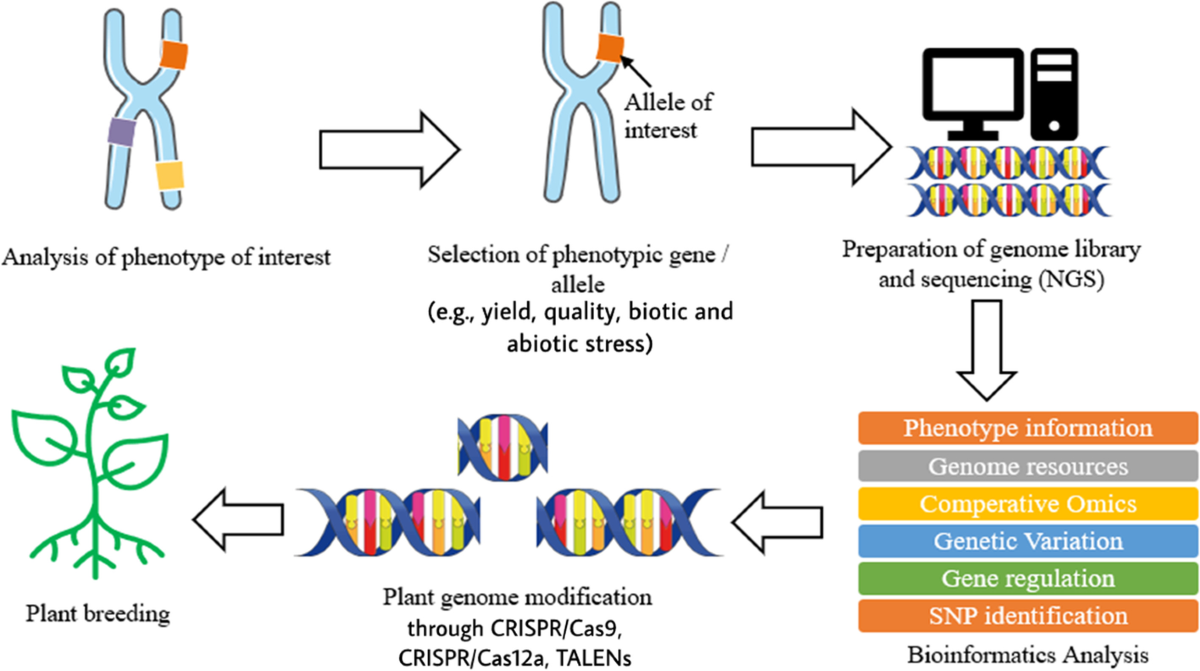More About Bioinformatics Tutor
Table of ContentsThe Ultimate Guide To Bioinformatics TutorThe Only Guide to Bioinformatics TutorThe Buzz on Bioinformatics TutorSome Of Bioinformatics TutorNot known Incorrect Statements About Bioinformatics Tutor
Of the total amount individuals included in the training, 80% were trainees from public higher education organizations, while the staying 20% originated from personal institutions. To get a certification of involvement, trainees were needed to participate in a minimum of 90% of the overall training hours. As a result of this requirement, an impressive 95% of the individuals successfully obtained their certifications, having not just fulfilled the minimum attendance requirements but additionally finished all designated activities throughout the training.
During the height of the COVID-19 pandemic, particularly between June and August 2020, the project group was tasked with arranging specialized training in bioinformatics. This training was especially focused on pupils from the research study group Center for Research in Applied Computing at the Federal College of Pará (UFRA) The adjustment to remote discovering systems due to the pandemic created an opportunity to check out brand-new training methods and electronic devices that enhanced both reach and performance.
This training course was created to provide an accessible yet comprehensive summary of Artificial Knowledge strategies, especially as applied in bioinformatics (Bioinformatics Tutor). This online layout made it possible for involvement from students across Brazil, several of whom might not have had the possibility to go to in-person sessions.
The 9-Second Trick For Bioinformatics Tutor
Approximately 50% of the overall training hours were devoted to functional tasks where students built smart versions and applications in an array of scientific domains, including genes, molecular biology, and ecological information evaluation. These platforms made it possible for trainees to engage in real-time information adjustment, design training, and algorithm testing.
The program attracted 80 individuals in overall. Sixty of them were associated with numerous college establishments in the state of Pará, while the continuing to be twenty originated from establishments located in 5 various other Brazilian states. This broad geographical depiction highlighted the national rate of interest in bioinformatics and the growing demand for specialized abilities in this field. By presenting Artificial Intelligence in a sensible and relevant context, the effort offered to bridge the space between concept and real-world application, giving students with a solid structure for future research study or work in the field.
The training initiative formed part of a wider academic outreach effort understood as the Bioinformatics when driving project. This task has, throughout the years, presented dozens of students to the world of bioinformatics and computational biology. The occasions held under this umbrella initiative have occurred across several regions and years, as summarized in Table 1 (List of occasions, areas, years, and total varieties of pupils and trainers)
One of one of the most impressive end results of the Bioinformatics when driving effort has actually been its payment to the growth of decentralized research teams. Numerous of these teams, initially brought together by their engagement in training events, have actually given that gone on to produce independent scientific research in cooperation with regional academic establishments. The training not only cultivated clinical thinking within the context of bioinformatics but additionally triggered joint connections that expanded beyond the training environment. These cooperations have actually resulted in enhanced neighborhood scientific efficiency and contributed meaningfully to the growth of the wider bioinformatics community in Brazil.
The Basic Principles Of Bioinformatics Tutor
The job itself was conceived and organized by MB and RR, who supervised the preparation and implementation of each step. Lectures were provided by a multidisciplinary team containing MB, FA, EF, KP, JS, DM, SN, LP, LG, IH, ac, and rr. The same team, omitting IH and RR, likewise worked as tutors for the sensible training components. Financing for the job was provided with the give 88887.200562/ 2018-00 from CAPES. The authors extend their thankfulness to everyone who added to the realization of this project, whether directly or indirectly, because its creation.
The Federal University of Pará's Office of Research (PROPESP/UFPA) also provided financial backing, particularly for the production of the last manuscript. The writers state no industrial or financial conflicts of interest that can have influenced the research. All viewpoints and analyses revealed in this article are exclusively those of the writers and do not always reflect those of their corresponding institutions, the publisher, editors, or reviewers entailed in the publication procedure.

Bioinformatics Tutor for Dummies
From an instructional perspective, the mentor approach utilized in the training was purposefully interactive. Courses were performed in a way that urged pupil participation and discussion, exceeding rote memorization to explore exactly how concepts are created, used in day-to-day live, and evaluated in scholastic settings. The training approach concentrated on nurturing both solid and struggling students, offering personalized assistance, and building confidence through sustained mentorship and perseverance.

Each group, being composed of approximately 36 participants, was supported by three coaches-- a lot of whom were postdoctoral scientists with Get More Info specific knowledge. These advisors not just aided develop the team projects however likewise promoted their implementation, making sure that each research study question was both relevant and properly tough. The goal was to supply a naturally practical context that individuals can explore with open-ended goals and access to curated datasets.
For added insights into the approach and outcomes of this project-based knowing strategy, try this viewers are routed to S1 Text, that includes thorough summaries of the pedagogical framework, evaluation strategies, and task motifs used in the training sessions.
Bioinformatics Tutor for Beginners
Of the total amount individuals involved in the training, 80% were pupils from public higher education institutions, while the continuing to be 20% came from personal institutions. To certify for a certificate of engagement, pupils were required to participate in at the very least 90% of the total training hours. Significantly, past the pupils who enlisted in the training sessions, seven seasoned trainers got involved in providing the programs, while 3 devoted study professors coordinated the total training process. Around 50% of the total training hours were devoted to useful activities where trainees constructed intelligent designs and applications in a range of clinical domains, including genetics, molecular biology, and ecological data analysis. The training not just cultivated clinical thinking within the context of bioinformatics yet also stimulated collaborative connections that click for source expanded beyond the training environment.